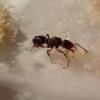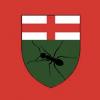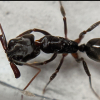- Formiculture.com
- Forums
- Gallery
- Members
- Member Map
- Chat
7 replies to this topic
#1
 Offline
-
Posted November 21 2019 - 5:19 AM
Offline
-
Posted November 21 2019 - 5:19 AM
Hi all.
So I just had a nuptial flight and i caught a bunch of queens. (Expect an ID on them soon becuase i am really not sure what they are).
Anyway, tonight i used a method to try to determine if they had mated or not.
I know the queens removing their wings is unreliable so i wanted to find something that would make it not a complete guess. I though i could test if they still had control of their wing muscles by dropping them and seeing if they "fly".
I assumed that after fertilisation they lost control of their wing muscles, however all the queens i caught tonight could "fly". (Lets hope its not what we were all thinking).
Do the queens actually loose the ability to fly or do they just land to search out a nesting spot?
So I just had a nuptial flight and i caught a bunch of queens. (Expect an ID on them soon becuase i am really not sure what they are).
Anyway, tonight i used a method to try to determine if they had mated or not.
I know the queens removing their wings is unreliable so i wanted to find something that would make it not a complete guess. I though i could test if they still had control of their wing muscles by dropping them and seeing if they "fly".
I assumed that after fertilisation they lost control of their wing muscles, however all the queens i caught tonight could "fly". (Lets hope its not what we were all thinking).
Do the queens actually loose the ability to fly or do they just land to search out a nesting spot?
- ant007 likes this
Current Queens/Colonies:
- Iridomyrmex Bicknelli - Iridomyrmex Sp. (x2)
- Camponotus Consobrinus - Camponotus Sp.
- Myrmecia Sp. - Rhytidoponera Metallica
- Rhytidoponera victoriae - Notoncus Sp. (x2)
- Anonychomyrma Cf. Froggatti (x6)
#2
 Offline
-
Posted November 21 2019 - 8:40 AM
Offline
-
Posted November 21 2019 - 8:40 AM
Most queens mate and then fly to a suitable place to start a nest, so no
My journals:
Polyergus Mexicanus: https://www.formicul...gs/#entry175528
Lasius minutus: https://www.formicul...cs/#entry174811
Lasius latipes: https://www.formicul...gs/#entry206449
General acanthomyops journal: https://www.formicul...yops-with-eggs/
Polyergus Mexicanus: https://www.formicul...gs/#entry175528
Lasius minutus: https://www.formicul...cs/#entry174811
Lasius latipes: https://www.formicul...gs/#entry206449
General acanthomyops journal: https://www.formicul...yops-with-eggs/
#3
 Offline
-
Posted November 21 2019 - 3:29 PM
Offline
-
Posted November 21 2019 - 3:29 PM
Most queens mate and then fly to a suitable place to start a nest, so no
so would you say the test i did is a suitable way to determine if they were fertilized?
Current Queens/Colonies:
- Iridomyrmex Bicknelli - Iridomyrmex Sp. (x2)
- Camponotus Consobrinus - Camponotus Sp.
- Myrmecia Sp. - Rhytidoponera Metallica
- Rhytidoponera victoriae - Notoncus Sp. (x2)
- Anonychomyrma Cf. Froggatti (x6)
#4
 Offline
-
Posted November 21 2019 - 3:41 PM
Offline
-
Posted November 21 2019 - 3:41 PM
They can fly as long as they have not metabolized their wing muscles. So they can until they attempt to found a colony. Keep in mind that even queens that have not mated can and usually will try to found a colony.
- Formicoidea likes this
My Main Journal | My Neivamyrmex Journal | My Ant Adoption | My YouTube
Join the TennesseeAnts Discord Server! https://discord.gg/JbKwPgs
#5
 Offline
-
Posted November 21 2019 - 3:47 PM
Offline
-
Posted November 21 2019 - 3:47 PM
They can fly as long as they have not metabolized their wing muscles. So they can until they attempt to found a colony. Keep in mind that even queens that have not mated can and usually will try to found a colony.
which means it is well and truly, a lucky dip. ![]()
- TennesseeAnts likes this
Current Queens/Colonies:
- Iridomyrmex Bicknelli - Iridomyrmex Sp. (x2)
- Camponotus Consobrinus - Camponotus Sp.
- Myrmecia Sp. - Rhytidoponera Metallica
- Rhytidoponera victoriae - Notoncus Sp. (x2)
- Anonychomyrma Cf. Froggatti (x6)
#6
 Offline
-
Posted November 21 2019 - 4:01 PM
Offline
-
Posted November 21 2019 - 4:01 PM
Most of the queens I have successfully raised colonies from have been caught from mid flight.
- ant007 likes this
My Main Journal | My Neivamyrmex Journal | My Ant Adoption | My YouTube
Join the TennesseeAnts Discord Server! https://discord.gg/JbKwPgs
#7
 Offline
-
Posted November 21 2019 - 4:38 PM
Offline
-
Posted November 21 2019 - 4:38 PM
And since queens can mate multiple times, they still would fly around after fertilization looking for more mates.
"God made..... all the creatures that move along the ground according to their kinds (including ants). And God saw that it was good. Genesis 1:25 NIV version
Keeping:
Tetramorium immigrans Camponotus vicinus, modoc, novaeboracensis, herculeanus
Formica pallidefulva, argentea Solenopsis molesta
Formica cf. aserva Lasius brevicornis, neoniger
#8
 Offline
-
Posted November 25 2019 - 11:46 AM
Offline
-
Posted November 25 2019 - 11:46 AM
I can't say for all species, but I have seen C floridanus queens land, take off, fly a short distance, land, and repeat several times. I have also collected mated queens that were definitely able to fly but were dazzled/trapped by the UV light I was using (taking off repeatedly but just smashing back into the blacklight)
Edited by SuperFrank, November 25 2019 - 11:47 AM.
- TennesseeAnts, Somethinghmm, Formicoidea and 1 other like this
Also tagged with one or more of these keywords: question, ants
 |
Ant Keeping →
Ant Keeping Journals →
AntsCzech's general journalStarted by AntsCzech , Oct 18 2025 |
|
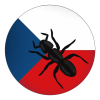
|
|
Ant Keeping →
General Ant Keeping →
DeforestationStarted by Idontexist , Oct 1 2025 |
|
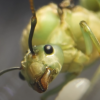
|
||
Ant Keeping →
Ant Keeping Journals →
Entomologyants's Dark Rover Ant Journal!Started by Entomologyants , Sep 18 2025 |
|

|
||
Ant Keeping →
Ant Keeping Journals →
Antz_Straya's Australian AntsStarted by Antz_Straya , Sep 7 2025 |
|
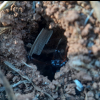
|
||
Ant Keeping →
General Ant Keeping →
Ant Colonies for Sale, Tetramorium, Lasius, ManicaStarted by Stubyvast , Jul 23 2025 |
|

|
0 user(s) are reading this topic
0 members, 0 guests, 0 anonymous users

